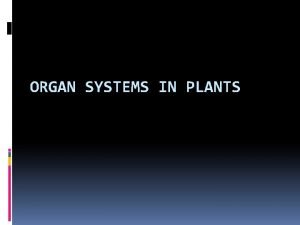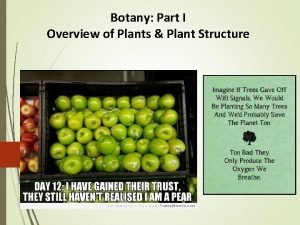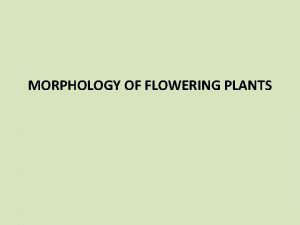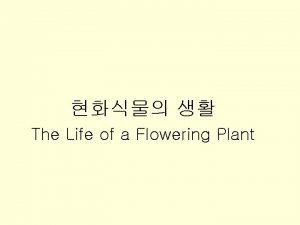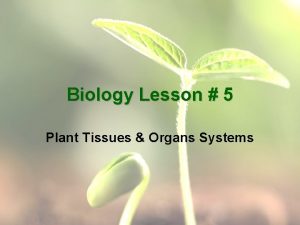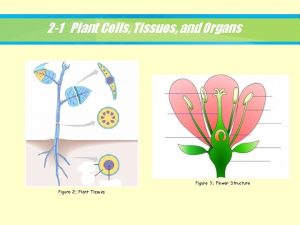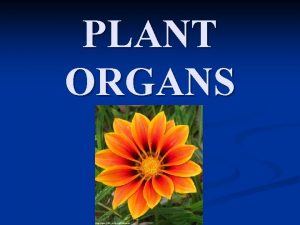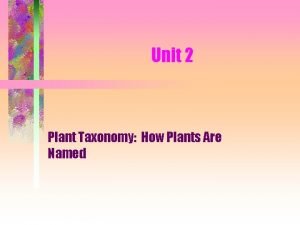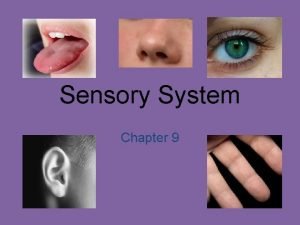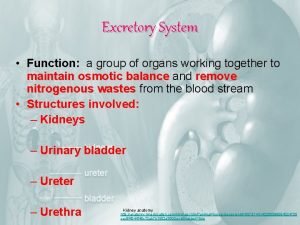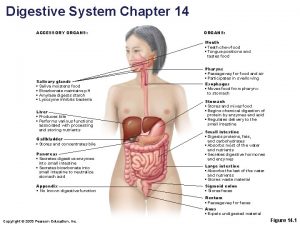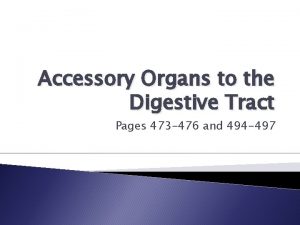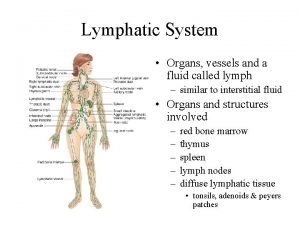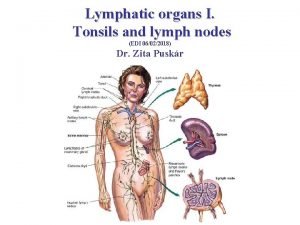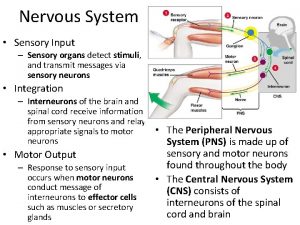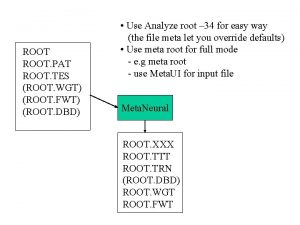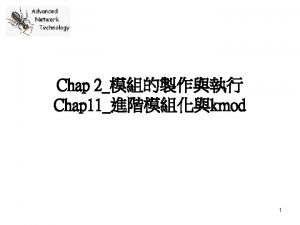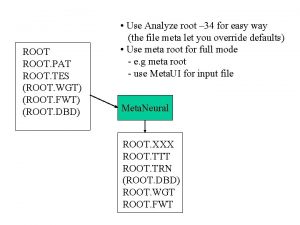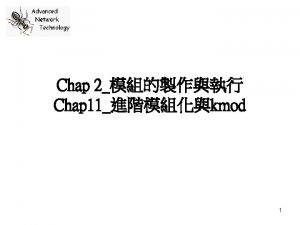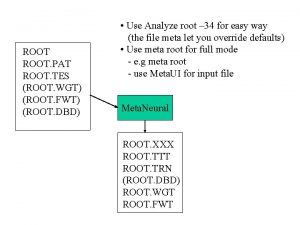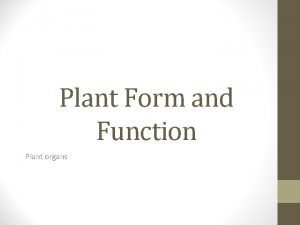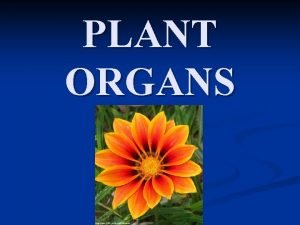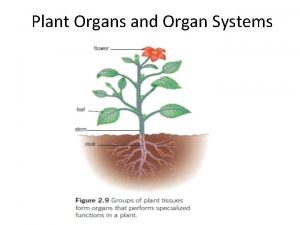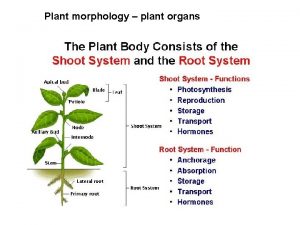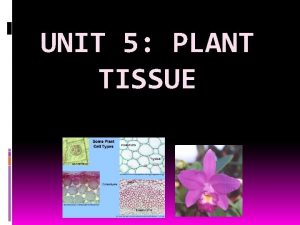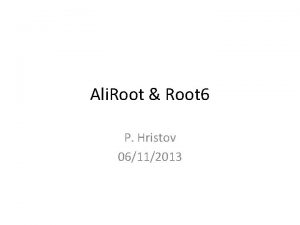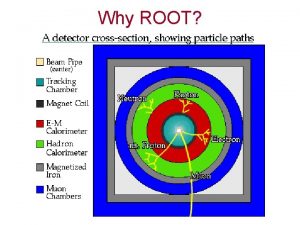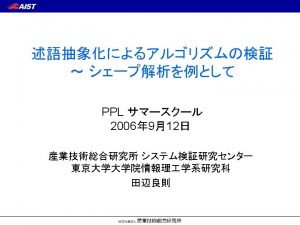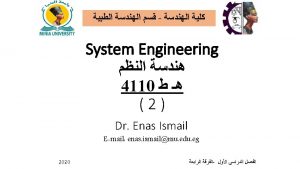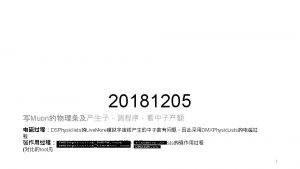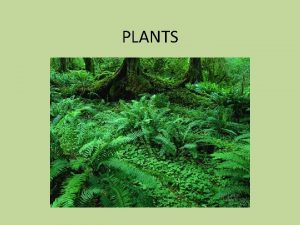Plants II Plant organs Plant organs Root system























- Slides: 23

Plants II Plant organs

Plant organs § Root system – roots § Shoot system – stem and leaves § Vegetative organs – (allow to live and grow): roots, leaves, stem § Reproduction: flowers, seeds and fruits

Roots § Underground, usually equal to shoot system in size § Anchors and gives support § Absorbs water and minerals § Penetrates soil as it grows § Root hairs increase surface area § Produce hormones

stems § Main axis of plant § Support leaves so that leaves are exposed to as much light as possible § Node – where leaf is attached § Internode – space between nodes § Vascular tissue used in transport § Can store nutrients and water and conduct photosynthesis

leaves § Photosynthesis § Size, shape and texture vary and is used in identification § Blade – wide portion of leaf § Petiole – stalk, attaches blade to stem § Axillary bud – where branch or flower may originate

Monocot vs Eudicot fig 25. 3 § Compare seed leaf, root, stem, leaf and flower § Monocot – 1 seed leaf, xylem and phloem in a ring, vascular bundles scattered, leaf veins parallel, flower parts in 3’s and multiples of 3 § Eudicot – 2 seed leaves, phloem between arms of xylem, vascular bundles in ring, leaf veins in net pattern, flower parts in 4’s, 5’s § Eudicots make up larger group and include most familiar flowering plants § Monocots include grasses and most of food sources, like rice, wheat and corn

Plant tissues § Meristematic tissue = embryonic § Apical meristem – located on tip of stem and roots, growth § produces 3 types of meristem § § § Protoderm epidermis Ground meristem ground tissue Procambium vascular tissue § Woody (non herbaceous), non woody (herbaceous – perennial, dies back in winter)

Epidermal tissue § Forms outer protective covering of plant § Walls of epidermal cells exposed to air are covered with a waxy cuticle § Roots – form root hairs § Stems and leaves – trichomes – hairs that protect form too much sun and moisture reserve § Leaves – guard cells, stomata § Periderm – old woody plants, replaces epidermis § Cork cells – protection § Cork cambium – new cork cells made from § Lenticels – areas of overproduction of cork cells, gas exchange

Ground tissue § Bulk of a plant § 3 types: 1. Parenchyma cells – most abundant, found in all organs of plant, least specialized 2. Collenchyma – thick primary walls, flexible support to immature regions, celery strand 3. Sclerenchyma – thick secondary walls that contain lignin (make walls tough), support mature region of plant

Vascular tissue § Xylem – water and minerals, roots to leaves § Phloem – sucrose and organic molecules (hormones) form leaves to roots § Complex tissues – contain 2 or more kinds of cells § Both extend from roots to leaves § Roots- located in vascular cylinder, stem – vascular bundles, leave – leaf veins

Xylem figure 25. 6 § 2 types of conducting cells, hollow and non-living § Tracheids – tapered ends, contain pits where secondary wall does not form § Vessel elements – larger, perforation plates § Parenchyma cells that store substances

Phloem – fig 25. 7 § Sieve tube members – continuous sieve tube – no nucleus § Companion cells – have nucleus § Connected to sieve tube member by plasmodesmata

Root organization § Root cap – apical meristem, replaced often § Zones § Cell division – primary meristem, mitosis § Elongation – cells lengthen and specialize § Maturation – root hairs, fully differentiated

Eudicot root tissue § § § Epidermis – single outer layer, root hairs Cortex – thin walled parenchyma, food storage Endodermis – boundary between cortex and vascular tissue § Casparian strip – prevents water and mineral ions between cell walls § Vascular tissue – xylem and phloem § Pericycle – first layer of cells § Monocots similar, differ in arrangement of xylem and phloem in a ring, ground tissue is pith

Root diversity § Taproot – grows straight down, fleshy, stores food, carrot, beet § Fibrous root system – in monocots – seen in grasses, strong anchorage § Adventitious roots – develop from shoot system instead of root system, seen in corn, can come above soil line § Root nodules – beans, peas…, nitrogen fixation § Mycorrhizae – plant roots and funugs

Stem organization § Terminal bud – shoot tip protected by bud scales § Leaf and bundle scars – location of leaves that have dropped § Axillary buds – give rise to branches or flowers § Bud scale scar – indicates age of stem, one for each year of growth § Primary meristem primary tissues § Protoderm epidermis § Ground meristem pith (ground tissue) § Procambium cortex (vascular tissue)

Herbaceous stems § § § Non woody, die off in winter, perennial Only primary growth Eudicot, vascular bundle in rings, cortex separate from pith § Monocot – vascular bindles scattered, no well defined cortex or pith

Woody Stems § Primary (length) and secondary (girth of trunks) tissues § Secondary tissues form from lateral meristem: vascular cambium and cork cambium § Vascular cambium produces new xylem and phloem each year § 3 distinct areas: bark, wood and pith

Bark and Wood § Contains periderm § when stem becomes woody, replaces epidermis § Cork, cork cambium and phloem § Removing bark and be fatal to tree § Wood is secondary xylem, girth § Vascular cambium is dormant in winter § Annual ring – sapwood, inner rings heartwood

Stem diversity § Stolons – aboveground horizontal stems, reproduce where nodes touch ground, runners, strawberries § Rhizomes – underground, horizontal stems, some contain tubers (food storage) like potatoes § Corm – bulbous underground stems, gladiolus

Leaf organization § Consist of blade and petiole § Veins are netted in eudicots, parallel in monocot

Cross section leaf § Trichomes – protective hairs § Cuticle – prevent desiccation but prevent gas exchange § Stomata on underside § Mesophyll tissue § Palisade § spongy

Leaf diversity § Simple § Compound § § Pinnately compound Palmately compound § Arrangement § § § Alternate Opposite Whorled § Leaves based on adaptation to environment
 Plants organs that work together
Plants organs that work together Root system in plants
Root system in plants Vascular plants
Vascular plants Nonvascular plants reproduction
Nonvascular plants reproduction Flowering and non flowering plants similarities
Flowering and non flowering plants similarities C3 plant
C3 plant Plant organs
Plant organs In some plants like grass monstera and banyan tree
In some plants like grass monstera and banyan tree Plant organs
Plant organs What is ground tissue in plants
What is ground tissue in plants Plant tissue and organs
Plant tissue and organs Plant tissue and organs
Plant tissue and organs Four organs of a plant
Four organs of a plant Unit 2 plant taxonomy how plants are named
Unit 2 plant taxonomy how plants are named Sensory system organs
Sensory system organs Process of excretory system
Process of excretory system Major and accessory organs of the digestive system
Major and accessory organs of the digestive system Accessory organs of the digestive system
Accessory organs of the digestive system Accessory organ of the digestive system
Accessory organ of the digestive system Lymphatic and urinary system
Lymphatic and urinary system Formation of lymph
Formation of lymph Subcapsular sinus
Subcapsular sinus Lymphatic system organs and functions
Lymphatic system organs and functions Organs of the sensory system
Organs of the sensory system
